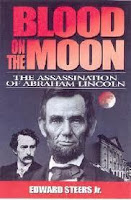Monday Mix Highlights FridayReads
--by Hanje Richards
I would like to invite readers of all kinds of writing to join me and thousands of others around the world in participating in something called FridayReads. I have been participating in FridayReads since last summer and have enjoyed watching this movement of people who read, sharing their enth usiasm with others.
usiasm with others.
 usiasm with others.
usiasm with others.At this point, you can participate two ways, on Twitter and on Facebook. I participate on Twitter because that is where FridayReads started, and it is where I started. But if you don’t do Twitter, there is now a Facebook version.
.
Here is a short description from the Facebook page of FridayReads:
..................
"About: Because books are better when shared.
Description: Every Friday, thousands of people post what they're reading, whether a book, magazine, blog post or bus schedule. The point is to share what we're reading in order to promote reading!
Information: [...] When you share your FridayReads, you also become eligible for fantastic prizes. Each week, participants are randomly selected to receive free books.
FridayReads started in October 2009 when Bethanne Patrick, The Book Maven, realized that online communities are ideal venues to gather readers together to celebrate reading. Bethanne realized that with social media — Twitter and Facebook especially — the global community of readers finally has the tools to answer the age-old question, “What are you reading?”
FridayReads is not a corporate endeavor, but rather is a labor of love — and crowdsourcing — from readers. We’re grateful, though, for the authors and publishers who donate prizes each week! Prizes — books and magazines — are awarded to randomly selected FridayReads participants each week and, as the number of participants grows, so do the prizes available. So, be sure to ask your friends to participate, too.
Our hope with FridayReads is, simply, to celebrate and promote reading. Unlike a traditional book club, there’s no need to share analysis — unless you want to. Many folks have commented that they’ve discovered new books through FridayReads, and we’re thrilled to hear it. Every week, thousands of readers from around the world weigh in, proving that reading — of any and everything and in a multitude of formats — is alive and well.
It will take five minutes of your time on Friday to hop online to Twitter or Facebook and post what you are reading, from a technical manual or newspaper to a novel or a scholarly tome. This is about celebrating reading. It doesn’t matter if you post the same book two weeks in a row, or three."
..................
When I first started participating in FridayReads on Twitter, it was a struggle to get to 500 or 600 participants. Last week, the day ended with 6,200 participants! Additionally, FridayReads has begun to make a “best read” list available where you can see, not what is selling in the stores, but what is actually being read by real readers like you. (It is a great way to keep up on what is new, and what is interesting to other readers, right now… well, actually, as of last Friday.)
I think that people who read the Copper Queen Library blog can make an impact on this fun celebration of reading. Join with me on March 4 in supporting the fun at FridayReads on Facebook or Twitter!



















































